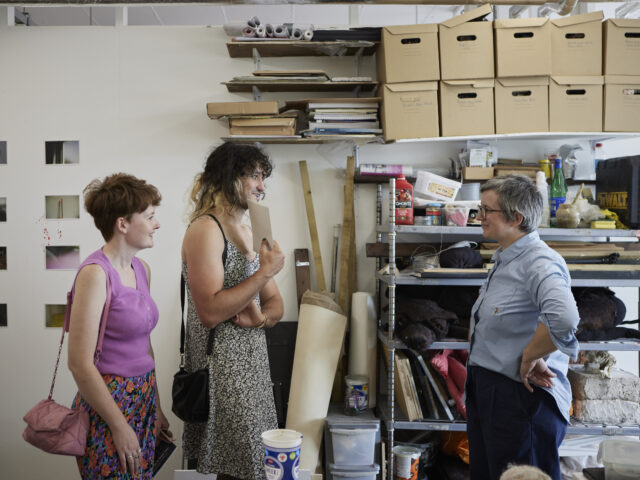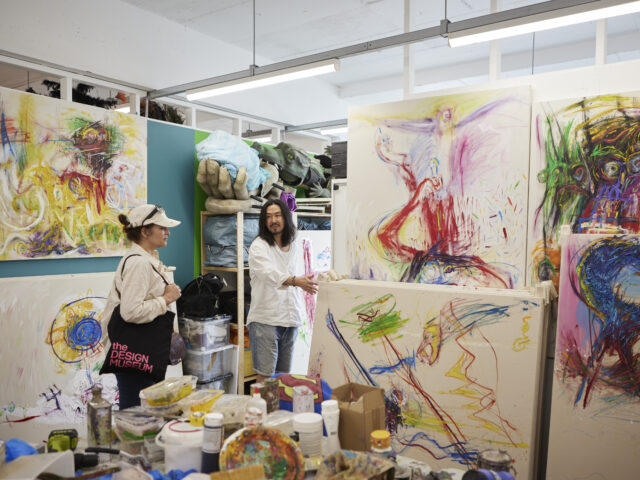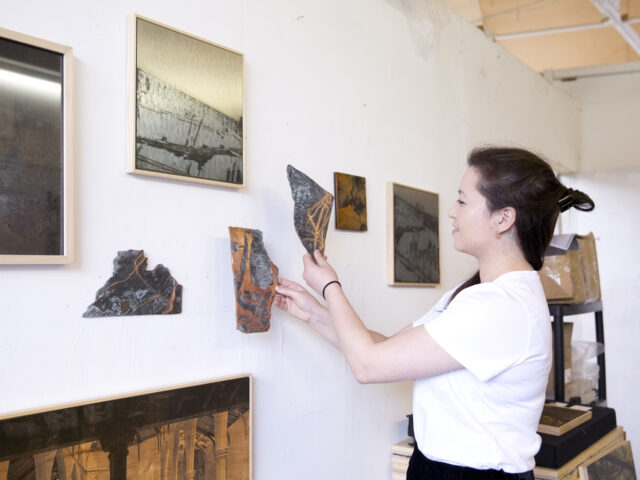How much should I pay for an affordable art studio in London?
The costs of renting workspace in London can vary massively depending on the location, the type of building, the services provided and the values of the studio provider.
Artist’s Studio Finder displays a simple icon on each of our listings that shows you what the relative cost of the art studio is, but there will always be personal circumstances and preferences that determine your budget.
As well as cost, here are some factors to look out for when deciding how much to pay for an art studio in London:
Size & Cost
How much space do I need for my art practice? Knowing how much space you need for your preferred working methods will help you decide how far you can stretch your budget. Practical considerations, like storage or shelving for art supplies, materials, and finished artworks should also be taken into account.
If you’re thinking long-term, imagine what will create a space that inspires creativity and feels comfortable to work in, and how your art practice might evolve or expand.
When comparing London studios it is really important that you are able to compare like for like. The easiest way to do this is by working out the cost per square foot or per square meter of the spaces you are comparing.
We ask all studio providers advertising space on Artist’s Studio Finder to use a per calendar month (PCM) rent, so that its simple and clear, just like when you rent a flat.
The price per square foot (£ / Sqft) is worked out using the total annual cost. So you simply multiply the monthly rent by 12 then divide by the listed square footage of the studio.
e.g. A 300 SqFt studio advertised as £500 pcm costs £500x 12 / 300 = £20.00 per sq foot.
Find out more about the costs you may need to consider in our guide on costs to allow for when renting an artist studio.
Location
How does location impact the price of an artist studio in London? Centrally located studios in areas like Soho, Shoreditch, or Camden with good transport links can come with higher price tags. Close to galleries, London’s culture, and amenities like childcare or artist material shops, these art studios might ask you to weigh the convenience of the city life against a heftier cost.
Areas of London known for their existing artist communities, such as Hackney Wick, Deptford, or Bermondsey, may also be experiencing higher commercial rent prices, so make sure the cost of the studio is affordable.
When you factor in the cost of travel, an art studio in a location that is convenient and accessible may turn out to be more affordable—as well as providing more opportunities to be a local and spend time creating community.
Features & Facilities
Art can be a messy business. When viewing a studio, check beforehand to make sure the facilities fit the needs of your art practice.
For sculptors and metalworkers, dust and debris can be a factor in securing an artist studio. Illustrators or textile artists may be listening out for noise (and prefer a quiet workspace). If you’re a risk taker, and your painting practice happens to involve flammable materials or hazardous chemicals, be aware of the health and safety requirements of the studio space, and ask the right questions—like, how far is my studio from the messy sink?
Security & Length of Tenure
To balance security and flexibility in a legal contract when renting an artist studio, make sure you understand the assurances the studio provider is able to provide. A good indicator may be to understand the legal contract the studio provider offers.
A lease or a licence are the most common. The benefits of each depend on how they are managed.
A longer-term tenancy may provide greater protection and more rights, though these also come with more liability. In an ideal situation, a tenancy comes with the right to renew. For artists in a competitive rental market, it is important to be aware of tenancies in the form of an ‘excluded lease’ which sits outside of the Landlord and Tenants Act, which ask you to agree to waver your right to renew.
A shorter-term licence will offer you more flexibility at a lower cost, so is often the more affordable option. When provided by a registered studio provider, these are often secure options. Keep in mind, for a studio provider to deliver a quality service to artists, the studio licenses must be renewed annually, so there is little reason for them not to renew.
Photo Credit: Hallie Primus




